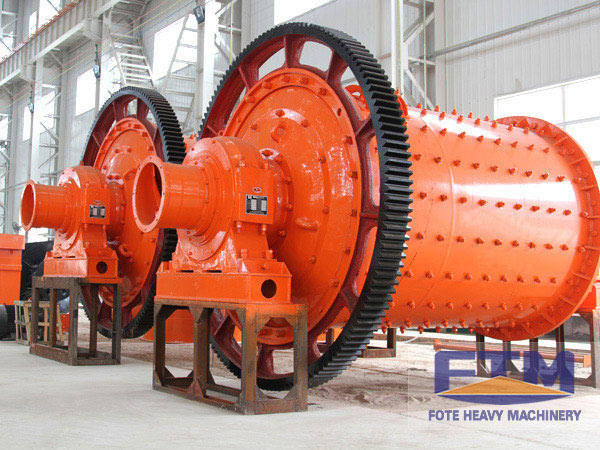NEWS
Common Problems & Solutions in the Operation of Wet Ball Mill
By: Fote MachineryOctober 12th,2019
As we all know, the ball mill is one of the most prone to problems as a kind of grinding equipment. Its problems come from many aspects. If they are not solved well, it will cause great damage to the ball mill and affect the company's production. The following are some of the common problems and solutions for running wet ball mills.

1. How to prevent the plug structure from blocking and leaking
For anti-blocking, we first need to check the size of the material and the amount of material transported. If the transport volume is overloaded, it will also cause the plugging of the inlet. For leak prevention, we first check whether the inlet seal has worn out, and it will leak after running for a period of time. It is necessary to replace the seal packing in time. And we have designed the discharge funnel and pipe at the inlet location to discharge the leaked slurry to the trench in time.
2. How to control the inlet pressure of the cyclone station
The inlet pressure of the cyclone station is ensured by trial adjustment of the outlet pressure of the slurry pump. Generally, the inlet pressure for the cyclone station is between 0.9 and 1.2. But sometimes you can adjust it as needed.
3. How to adjust the filtrate water
Adjust the amount of filtrate entering the ball mill inlet. One of the functions of the filtrate water at the inlet of the ball mill is to flow the slurry in the cylinder. If the filtrate has a large amount of water, the flow is fast, the grinding time is relatively short, and the particle size of the slurry is relatively large; otherwise, it becomes smaller. Under normal circumstances, the mass ratio of material to filtrate water entering the ball mill is preferably 1.3-1.5.
4. Controlled range of the slurry density
The slurry density is measured on-line by a slurry line installed in front of the inlet of the cyclone. The supplementary water regulating valve of the mill's slurry tank is to increase or decrease the density according to the density of the tank. The density range is from 1.35 to 1.54.
5. Matching adjustment of steel balls in ball mill
It is necessary to maintain a reasonable ratio of steel ball load and steel balls. The material is impacted, squeezed and ground into slurry by steel balls. If the steel balls are insufficiently loaded, the fineness will be difficult to meet the requirements. During operation, the ball load can be monitored by monitoring the main motor current of the ball mill. If the current is found to drop significantly, the steel balls need to be replenished in time. The ball mass ratio should be designed according to the design when the ball mill is put into operation for the first time. After three months of operation, the steel balls are added according to the amount of wear of the steel balls.
6. The influence of the material size of the mill inlet on the output of the mill
Control the size of the material entering the ball mill to make it within the design range. Generally, the wet ball mill has a feed particle size of 80% and a particle size of less than 12 mm. However, due to various reasons, if the steel ball is not replenished in time, it is necessary to appropriately reduce the amount of the feed according to the current reduction of the main motor of the ball mill to ensure the particle size of the slurry is qualified.
7. The fineness of the slurry at the outlet of the cyclone station must be periodically verified to provide a basis for fineness adjustment
Because the particle size of the material is determined by the ball milling of the ball mill. If the particle fineness does not meet the requirements, it is necessary to adjust the steel ball ratio or increase the steel ball. Therefore, maintaining a constant range of material feed size is a prerequisite for normal operation of the mill.

